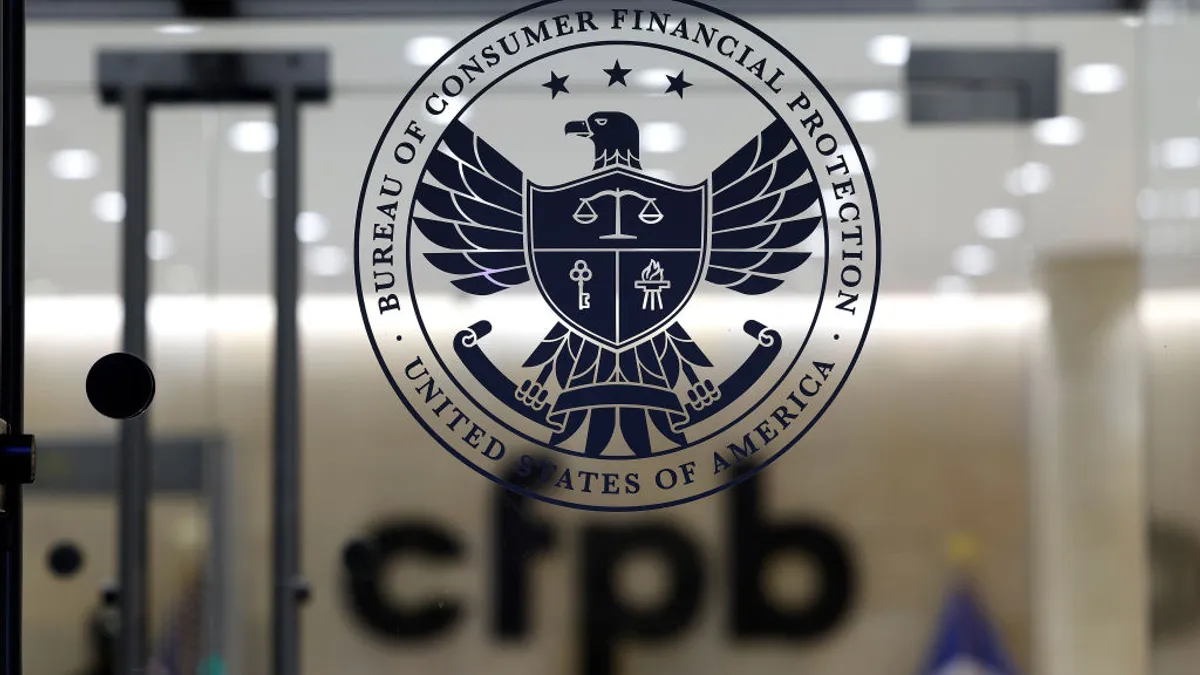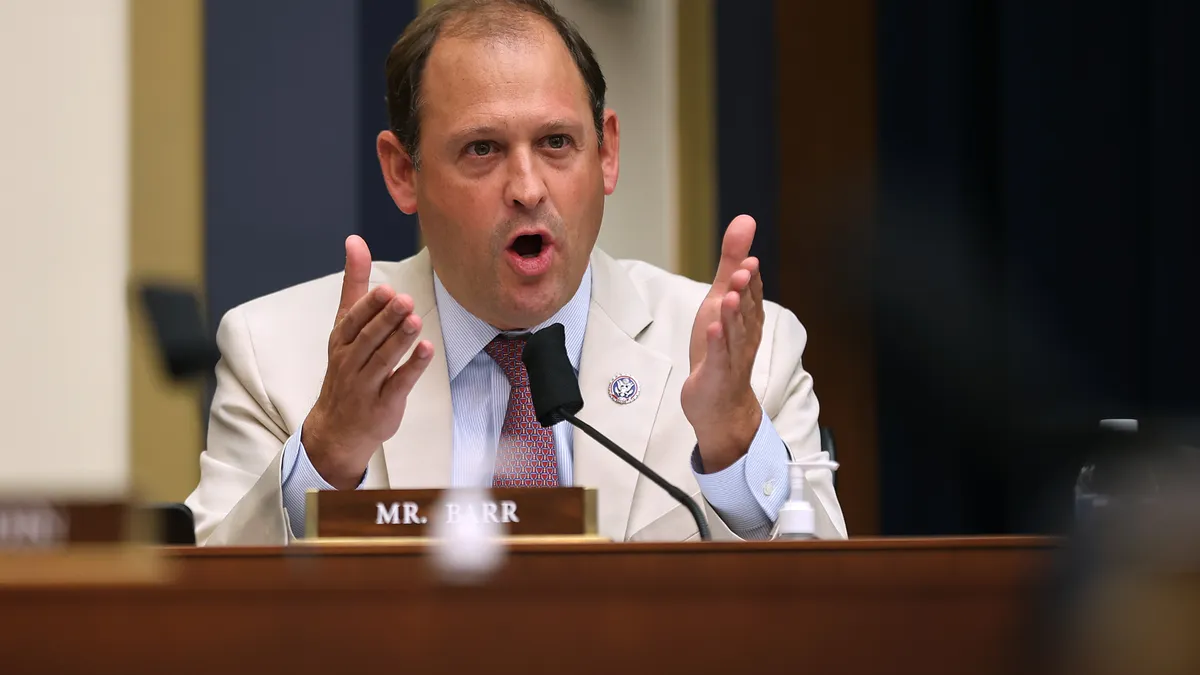Federal Reserve Gov. Michelle Bowman asserted herself, during a speech Friday, as a potential counterbalance to Michael Barr — addressing several of the same issues the central bank’s new vice chair of supervision did in public comments last month, and providing her own interpretation. Here are three times the regulators differed and one where they agreed:
1. Stress tests.
Bowman suggested averaging the results of stress tests over multiple years to improve their predictability. She stressed that regulation should be applied consistently across the industry, but noted that could be challenging because business models, balance sheets and risk profiles vary among banks.
Key quote: “Year-to-year variations are often not based in underlying changes to banks' business models and can create short-term challenges for capital management,” Bowman said. “We should take into account what we learn from past tests, feedback from the public and the banks themselves, and ensure that the test evolves in a way that improves consistency and fairness over time.”
Barr, too, last month said stress tests “need to continue to evolve.” However, he said: “They’re supposed to be stressful. They’re supposed to be tough. And I want to make sure that they are that way.”
2. Bank mergers.
While Barr said he would analyze the Fed’s approach to reviewing mergers to find areas of improvement, Bowman on Friday laid out the primary factors she said regulators should weigh — competitive effects of a merger, future prospects of the merged institution, service to communities, anti-money laundering compliance, and the transaction’s influence on the financial system’s stability.
But she added a secondary caveat.
Key quote: “We should be vigilant to be sure that other factors, like the idea that mergers are harmful or that increased bank size is inherently problematic, do not infiltrate that statutory analytical framework. The analysis and approval of mergers and acquisitions should be based on the reality of how customers and the financial system would be affected.”
Barr said: “A merged institution may be able to provide more competitive products and services, but it could also have the potential to reduce competition and access to financial services in a geographic area by raising prices, narrowing the range of services offered, and reducing the supply of small-business or community development loans that rely on local knowledge.”
Bowman said mergers can lead to “significant public benefits,” but acknowledged that “getting these policies wrong can significantly harm communities.”
But she also may have needled a spate of delays in the timelines of several mergers over the past year or so, saying Friday that the framework through which a potential deal is analyzed “works best when it is accompanied by transparency, both in timelines and expectations.” That, she said, “allows firms to know and understand what is expected of them, and what they can fairly expect during the merger application process. The rules of the road should not change during the application process.”
3. Crypto.
While Barr appeared to express a desire to get ahead of risk, and regulate “expeditiously,” Bowman seemed set on ensuring banks were included in the shaping of rules.
“The adoption and use of new technologies may present novel supervisory concerns, but the best way to address these concerns and encourage innovation is dialogue between bankers and supervisors before and during the development and implementation of those technologies,” Bowman said. “When a bank understands the legitimacy of a rule and establishes internal incentives to comply with it, the bank itself becomes the strongest supervisory tool that there is."
Bowman conceded that rules can be difficult to apply in cases of evolving technologies, but some of the ambiguity stems from “when the rules are not that clear in a particular context.”
“Banks should be able to know what the supervisory expectations are with respect to these new technologies in order to responsibly take advantage of them,” Bowman said.
Key quote: “We should consider whether there is a stabilizing role for banks to play in intermediation, or ensure that the competitive landscape does not create a financial stability risk by pushing activities outside the banking system, as we have seen with the mortgage industry … We should allow banks to participate as long as the risks can be identified and managed appropriately and responsibly.”
Barr said: “As innovative financial products develop and grow rapidly, excitement can outrun the proper assessment of risk.”
He said the Fed plans to coordinate with other agencies to ensure crypto activity inside banks is “well regulated, based on the principle of same risk, same activity, same regulation, regardless of the technology” the platform uses.
Where Barr prioritized matching activity to regulation, Bowman said it is crucial to match “oversight to risk, and to provide clarity in supervisory expectations for banks seeking to engage in the crypto-asset ecosystem.”
4. Capital requirements.
Bowman and Barr don’t always disagree. Both, in their recent speeches, touted a tiered system for capital requirements. Financial institutions, Barr said, should face “higher costs through more stringent regulations as they grow in complexity, size and interconnectedness,” while community banks should face “simpler regulations.”
Bowman on Friday said the rules adopted immediately after the 2008 financial crisis “applied a one-size-fits-all approach framed around the largest banks whose activities presented the most significant risks.
“This approach ignores the importance of bank size and business model,” she said, adding that the “smallest banks with simple business models should not be equivalent to the expectations for large regional banks, or for large and complex bank holding companies engaged in significant securities or cross-border activities.”
Key quote: “Capital requirements should strike an appropriate balance for each relevant tier of firm, with requirements that appropriately address risks, including financial stability risks, while recognizing the costs of over-regulation. Calibrating capital requirements is not a zero-sum game, where more capital is necessarily always better. Regulation is not cost-free. Over-regulation can restrain bank lending, which becomes a burden for individual borrowers and a potential threat to economic growth.”
Barr, too, kept an eye on cost. “When calibrating requirements, we will work to minimize unintended consequences, limit opportunities for gaming, and avoid excess compliance costs that do not result in risk reduction,” he said.























